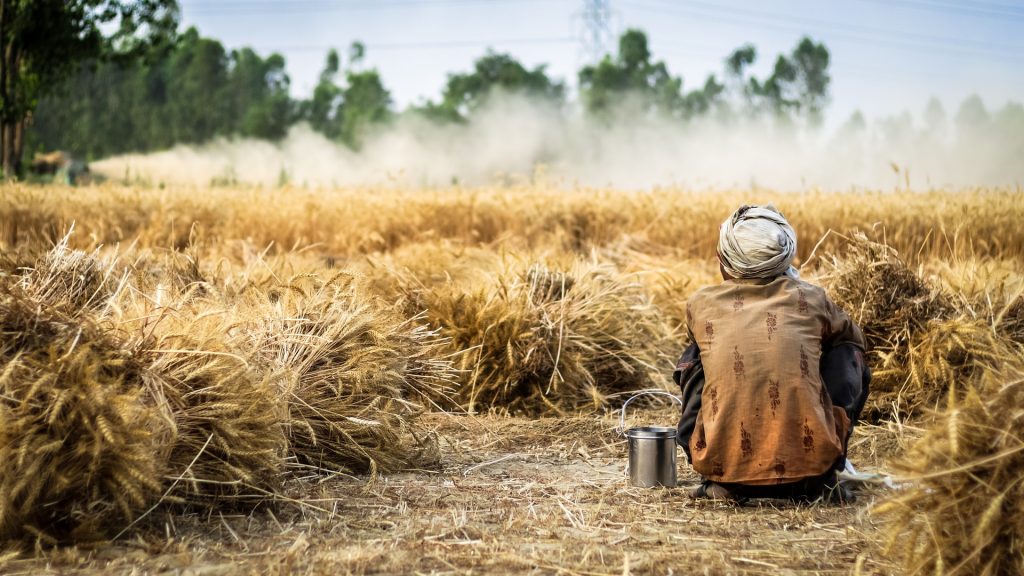Kushankur Dey
The Narendra Modi led NDA government is presenting the maiden budget of its second term today. It is a critical task for the government as the economy in general is sagging, GDP growth rate is declining, unemployment has reached an alarming level, and, most important, farm sector performance remains discouraging. Farmer have been seeking fair and remunerative prices since 2014-15; but no tried and tested policy measure is yet on the cards. Agriculture and allied sectors should, in this budget, receive considerable attention in fund allocation and spending.
What Union Budget 2019 can offer to mitigate the agrarian crisis is an area of concern for policymakers and academics. Before we spell out some rational expectations, we need to revisit promises made to the farm sector in Union Budget 2018 and Interim Budget 2019, critically assess their progress and identify shortcomings.
First, Union Budget 2018 emphasised fixing policy-determined minimum support prices (MSPs) to the extent of 1.5 times the production cost for major food crops, although Commission for Agricultural Cost and Prices proposed a revised calculation of MSPs. But the Government of India (2015-16) reported that only 5.8 per cent of farmers are beneficiaries of MSPs, and market clearing prices of major foodgrains and pulses or oilseeds and cotton have remained below MSPs in 2017-18. The lack of institutional support to improve awareness and to appropriate benefits of price support scheme could be one deterrent to farmer participation.
Budgetary allocation for agricultural inputs, credit delivery and services are also critical to double farmers’ income, but we are not certain of the timelines for its achievement
Second, linking small and marginal farmers with Grameen Agricultural Markets (GrAMs) through modernisation of 22,000 rural markets was an extension of electronic National Agriculture Market (eNAM) that was started in 2016. Union Budget 2018 allocated Rs 2,000 crore to agriculture market infrastructure fund. But besides a few Farmer Producer Companies and large farmers, small and no other farmer could access tangible benefits of the electronic spot market, such as checks of information asymmetry, price access and control of distress sales. In other words, ‘elite capture’ and ‘social exclusion’ might have excluded smallholders from regulated market participation.
Third, directed credit for the farm sector in the last Budget was Rs 11 lakh crore, while in 2016-17, the flow reported was Rs 9.59 lakh crore. Directed credit allocation in the farm sector has increased only marginally. However, from the perspective of financial inclusion, small and marginal farmers are not preferred customers of formal credit institutions owing to moral hazards and adverse selection. Small finance banks and improvised mobile banking channels can cater to the demand of farmers with suitable loan products and legitimate recovery policies.
Fourth, Union Budget 2018 had proposed to launch ‘operation green’ with corpus of Rs 500 crore that would promote Farmer Producer Companies, Agri-logistics and processing facilities in more than 40 Mega Food Parks. Any significant progress of this proposal is yet to be observed.
Fifth, allocation of Rs 10,000 crore to fisheries, aquaculture and animal husbandry could be a welcome move. However, in the absence of adequate farmer institutions and governance mechanisms, marketing of aquaculture products continues to face a setback.
Sixth, Agricultural Produce, Livestock (Promotion and Facilitation) Act, 2018 has brought necessary amendments to erstwhile APMC Model Act, 2003. Going by legalities, there is no provision to raise farmer’s voice if the monopsony market (due to large number of sellers and few buyers) fails to honour contract obligations or intentionally engenders the spirit of cartelisation and jeopardises fair price discovery. It is reported that opaque auctioning in APMCs discourages farmer participation, or encourages ‘artiyas’ (general merchants and commission agents) to indulge in trade malpractice. Though electronic price ticker boards linked to eNAM are installed in at least 585 APMCs, the majority of small farmers are yet to view prices on a day-to-day basis and use the privileged information to moderate marketing decisions.
Seventh, interim Budget 2019 had made some promises. For example, PM Kisan Samman Nidhi of about Rs 75,000 crore to Rs 80,000 crore annual allocation as farm income support, subvention of interest rates on crop and livestock loans to name a few. However, these could be short-term stimuli as think-tanks and economists argue.
In the light of Budget 2018, interim Budget 2019, announcements and critical analyses, Union Budget 2019 should meet expectations of farm communities and community-based organizations to resolve the pervasive agrarian distress through sustainable agri-business, ecological safety and prudent budgetary allocations. Thrust areas should include climate change adaptation funds for agriculture and allied activities, scaling up of microirrigation facilities and rainwater harvesting to carry out agriculture in drought-prone or dry land. Also, capacity building for agripreneurs, agriclinics and agribusiness centres, farmer producer companies and institutions should be promoted. Besides, procurement, trading, warehousing and marketing, among others, should be technology enabled.
Budgetary allocation for agricultural inputs, credit delivery and services are also critical to double farmers’ income, but we are not certain of the timelines for its achievement. In this regard, agricultural extension agencies, Krishi Vigyan Kendras, or ATMA centres must undergo massive overhaul to make small farmers aware of sustainable package of practices. Rural banking needs similar treatment to instil buoyancy in rural credit offtake for small farmers.
Agricultural research and agri-business management institutions should receive planned funding to carry out high quality research, and their findings should contribute to agribusiness and agricultural food policies.
Last but not the least, the Union Budget should promote sustainable farming with special emphasis on ground water and renewable energy resource utilisation, and facilitate technological innovation, development and policy initiatives to farm-based income generating activities and farmers’ welfare.
The writer teaches finance at IIM Bodh Gaya. Views are personal.
